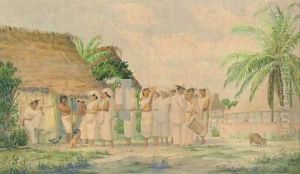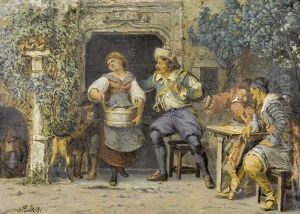Johann-Salomon Hegi Paintings
Johann-Salomon Hegi was a Swiss artist born on June 15, 1899, in Zurich, Switzerland. He was primarily known for his work as a painter and graphic artist. Hegi's artistic journey began at a young age, showing a profound interest in drawing and painting which would lead him to pursue formal education in the arts. His early works were heavily influenced by the Swiss traditional style of painting, but as he grew older, his style began to evolve, taking on modernist influences that were sweeping through Europe at the time.
Hegi's education included studying at the Zurich School of Applied Arts, where he honed his skills in various mediums. He was particularly adept at woodcuts, a skill that served him well throughout his career. In the 1920s, Hegi's work began to gain recognition beyond his native Switzerland, as he participated in several group exhibitions and his pieces were featured in galleries across Europe. His subject matter often included landscapes, still lifes, and portraits, executed with a keen attention to detail and a distinctive style that merged realism with elements of expressionism.
The 1930s brought more success to Hegi, but his life and career were tragically cut short when he died in an accident on April 27, 1937, at the age of 37. Despite his premature death, Johann-Salomon Hegi left behind a legacy that continues to be appreciated by art historians and collectors. His works are a testament to the Swiss artistic movements of the early 20th century and represent an important bridge between traditional and modernist styles.







